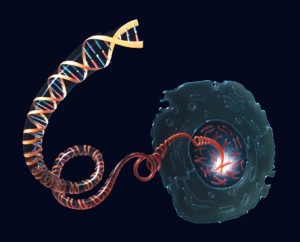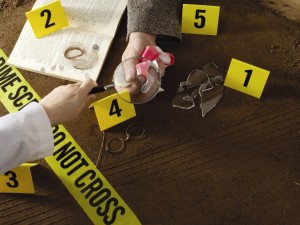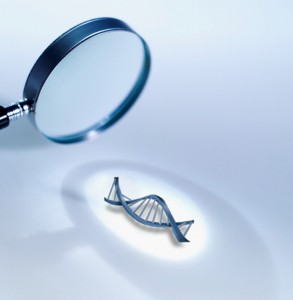
DNA molecule unwinding from a chromosome inside the nucleus of a cell. Source: National Human Genome Research Institute.
On July 10, 2012, The New York Times reported a match between DNA linked to the unsolved 2004 murder of Sarah Fox, a Juilliard student, and DNA recovered from a chain at the site of an Occupy Wall Street protest last March.
Protestors had wrapped the chain around an emergency exit door at a subway station to allow passengers to ride free. A surveillance video revealed people handling the chain, but they wore dark hoods and masks. To find the perpetrators, city officials decided to recover DNA from the chain. That’s when they discovered a match between DNA on the chain and DNA recovered from Sarah Fox’s CD player, which was found near her body.
The news reflects the ability of investigators to extract DNA from skin cells left on doorknobs and other surfaces. These samples are known as “touch DNA.” Recovered weapons are also swabbed for later DNA analysis.
Several surprises quickly followed the news about the DNA match. During the investigation of the 2004 murder, police and the Manhattan district attorney’s office had focused on a construction worker as the primary suspect. They never did find sufficient evidence to charge him. Now, the city reported that the matching DNA does not belong to the prime suspect.
On July 11, The New York Times announced an unexpected development: The DNA match may be due to a lab error. According to an unnamed source, the DNA recovered from skin cells on the student’s CD player and from the chain belong to a Police Department employee who works with the Office of the Chief Medical Examiner.
DNA errors wreak havoc on a criminal investigation. Mystery writers know that the same types of mistakes provide useful plot twists.




